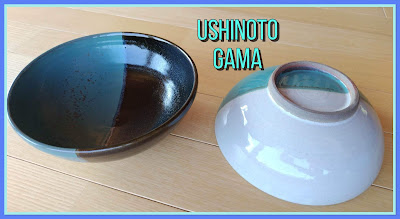Made in Tottori city, Tottori Prefecture, Ushinoto ware is considered a folk pottery. Though it existed before the Folk “Mingei” movement, the kilns were highly influenced by the movement. Probably the most well known aspect of Ushinoto is the plate separated in two or three parts using bluish green and black or a bluish green, black and creamy white. They do make many other styles as well. Apparently the style originated back in the Edo period. When Dr. Yoshida Shoya showed the old designs to Yanagi Soetsu who gave his opinion on the best of the designs. It is now produced by two kilns, the Ushinoto kiln headed by Mr. Kobayashi and the Nankai Inshu kiln headed by Mr. Sakamoto. I’m very thankful for the help of Alice Gordenker for the pictures and information concerning this style.
Subscribe to:
Post Comments (Atom)
Featured Post
Helpful Vocabulary When Researching Japanese Ceramics
Vocabulary when searching for Japanese Ceramics *I will be adding to this list Dating ( 江戸) Edo Period (1603-1868) (江戸 前期) Ea...
-
From 1921-1941, wares from Japan exported to the United States had to be marked "Japan" or "Made in Japan". During Wor...
-
Kutani ware is from Ishikawa Prefecture. The markings are often in red, but can be impressed, in blue, gold and sometimes black with a g...
-
The This company was in business from 1954-1994. It was bought out by Enesco in 1994. Registered in NYC and San Francisco. Recognized by it...







No comments:
Post a Comment